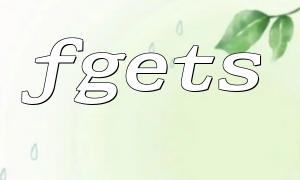With the rapid development of internet technology, PHP remains an essential server-side scripting language widely used in web development. PHP's closures, generators, and reflection techniques are powerful tools that enable flexible and efficient programming. This article will explain how to leverage these techniques to improve programming flexibility.
A closure in PHP is a powerful concept. It is an anonymous function that can capture and preserve variables from its surrounding context. Closures allow code to be stored, passed around, and even returned as a function result. One common use of closures is to simulate methods in object-oriented programming. Here is a simple example of a closure:
$greeting = function($name) {
echo "Hello, " . $name . "!";
};
$greeting("John");
$greeting("Mary");
As shown above, we assign an anonymous function to the variable `$greeting`, which can then be called like a regular function. The strength of closures lies in their ability to access variables from the context in which they were defined.
PHP generators, introduced in PHP 5.5, are a special type of function that allows you to yield values one at a time, instead of generating all results at once. This results in memory-efficient handling of large data sets. Below is an example of a generator:
function generateNumbers($start, $end) {
for ($i = $start; $i <= $end; $i++) {
yield $i;
}
}
foreach (generateNumbers(1, 10) as $number) {
echo $number . " ";
}
In the code above, the `generateNumbers` function uses the `yield` keyword to generate numbers one by one. In the `foreach` loop, we can process each generated value individually, making this approach memory-efficient when dealing with large datasets.
PHP reflection allows developers to retrieve detailed information about classes, methods, properties, and more at runtime. Reflection enables dynamic interaction with classes and methods, even if their implementations are unknown. Below is an example using reflection to access a class’s properties and methods:
class User {
public $name;
private $age;
public function __construct($name, $age) {
$this->name = $name;
$this->age = $age;
}
public function sayHello() {
echo "Hello, " . $this->name . "!";
}
}
$reflection = new ReflectionClass("User");
$properties = $reflection->getProperties();
$methods = $reflection->getMethods();
foreach ($properties as $property) {
echo $property->getName() . " ";
}
foreach ($methods as $method) {
echo $method->getName() . " ";
}
Using reflection, we dynamically retrieve all the properties and methods of the `User` class and loop through them for further operations. This mechanism provides great flexibility when working with unknown classes.
This article introduced PHP closures, generators, and reflection techniques, demonstrating how they can be used to implement flexible programming logic. Closures allow for context preservation, generators enable efficient data handling, and reflection provides dynamic access to class and method information. Together, these techniques make our PHP code more efficient, flexible, and maintainable.









